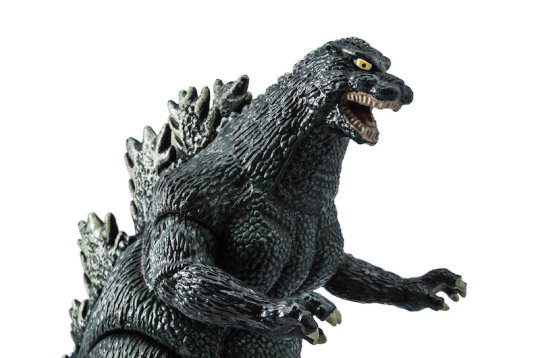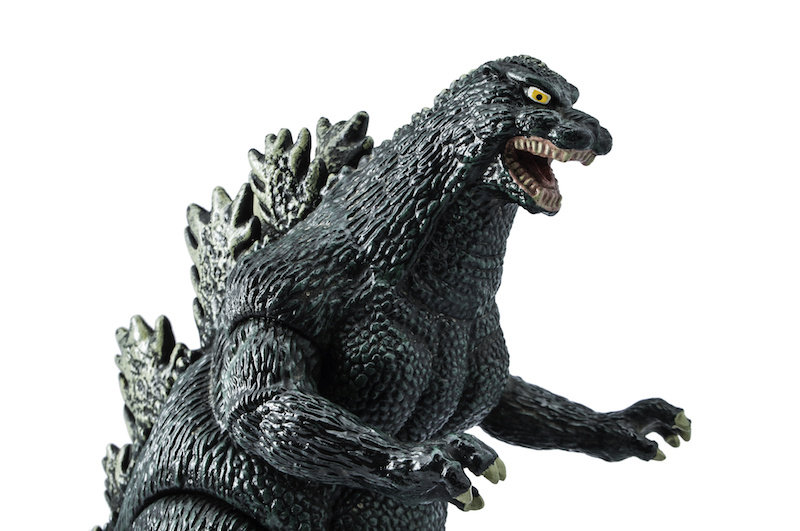[ad_1]

Godzilla model (stock image).
Godzilla first made his debut in 1954. At inception, he was a 50-meter tall metaphor for indiscriminate destruction, particularly U.S. hydrogen-bomb testing in the Marshall Islands, which, in the film, destroyed Godzilla’s deep-sea ecosystem. Sixty-five years and 35 films later, Godzilla is back and bigger than ever in Godzilla: King of the Monsters. At 119.8 meters tall, Godzilla battles it out for supremacy against three god-sized monsters, all with the future of humanity at stake. Film critics and fans have long observed that Godzilla has been getting larger over time, as buildings become taller. In fact, Godzilla has evolved 30 times faster than other organisms on Earth, according to a team of Dartmouth scientists whose findings are published in Science.
The researchers propose that Godzilla has been “evolving in response to a spike in humanity’s collective anxiety.” They used U.S. military spending as a proxy for our collective anxiety and found a strong correlation between it and Godzilla’s body size between 1954 and 2019. If Godzilla is the embodiment of our anxiety, they argued, then our collective anxiety appears to be spiking as it did during the nuclear age of the 1950s.
If one accepts that Godzilla is a ceratosaurid dinosaur from the Jurassic period, as argued in the film series, then he represents a sensational example of evolutionary stability over a span of at least 145 million years. Yet Godzilla has doubled in size since 1954, far surpassing the rate of evolution observed in 2,500 natural organisms today. “Godzilla’s body was consistent for some 150 million years until 1954, suggesting a sudden and strong selective pressure on body size during the past 65 years,” says co-author Nathaniel J. Dominy, the Charles Hansen Professor of Anthropology and a professor of the ecology, evolution, ecosystems and society graduate program at Dartmouth. Dominy co-authored the study with Ryan Calsbeek, an associate professor of biological sciences and of the ecology, evolution, ecosystems and society graduate program at Dartmouth.
The co-authors add that Godzilla endures as a cultural icon because it is a “fable with a lesson for our times.”
Story Source:
Materials provided by Dartmouth College. Note: Content may be edited for style and length.
Journal Reference:
- Nathaniel J. Dominy, Ryan Calsbeek. A movie monster evolves, fed by fear. Science, 2019; 364 (6443): 840-841 DOI: 10.1126/science.aax5394
Cite This Page:
Dartmouth College. “Godzilla is back and he’s bigger than ever: The evolutionary biology of the monster.” . , 30 May 2019. <www..com/releases/2019/05/190530101120.htm>.
Dartmouth College. (2019, May 30). Godzilla is back and he’s bigger than ever: The evolutionary biology of the monster. . Retrieved May 30, 2019 from www..com/releases/2019/05/190530101120.htm
Dartmouth College. “Godzilla is back and he’s bigger than ever: The evolutionary biology of the monster.” . www..com/releases/2019/05/190530101120.htm (accessed May 30, 2019).
[ad_2]















